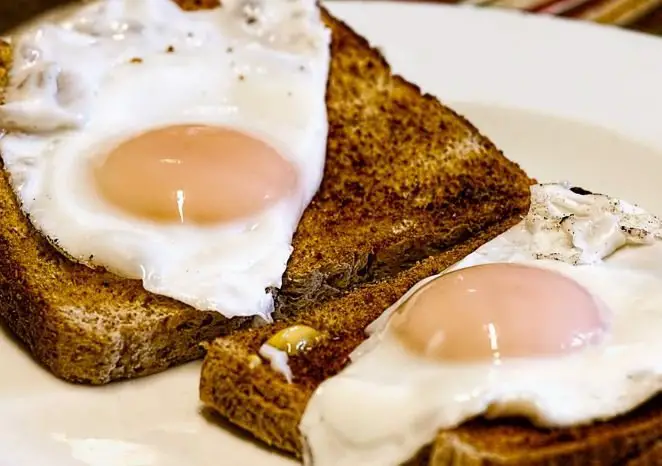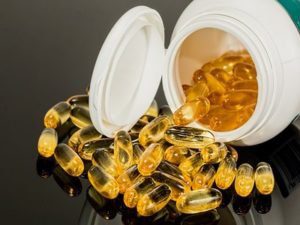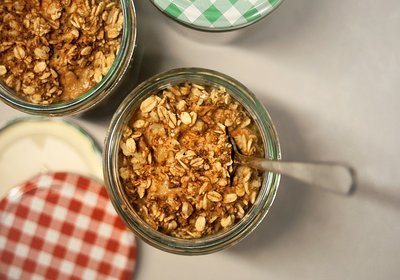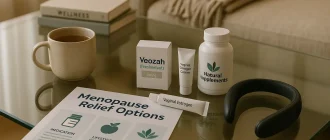People are typically shocked to discover they have high cholesterol, so our Cholesterol Helpline is frequently asked this question.
What is cholesterol
In Greek, this term means “solid bile. Cholesterol is a fat-like substance, 70 to 80% produced by the cells of the liver, and only 20 to 30% comes into the body with food. It performs many vital tasks in the human body, but at the same time it can deposit on the walls of the arteries, forming so-called cholesterol plaques, which leads to serious diseases such as atherosclerosis of the blood vessels.
So different cholesterol in the human body
Depending on its properties and density, a distinction is made between “good” and “bad” cholesterol. The substance that accumulates on the walls of blood vessels is low density cholesterol (LDL for short). Once it enters the body and combines with special kinds of proteins, it contributes to the development of atherosclerosis. However, this does not happen if cholesterol levels are normal.
“Good” is high-density cholesterol (HDL), which is needed for the entire body to function smoothly. In addition, it helps to utilize bad cholesterol by collecting it from the walls of blood vessels and transporting it to the liver for processing and neutralization. That is why it is important to keep adequate levels of the right cholesterol in the body, because vascular diseases can also develop if there is a lack of it.
Cholesterol is carried in the blood by special substances (molecules) called lipoproteins. A lipoprotein is a compound or complex consisting of a lipid (fat) and a protein.
The main types of lipoproteins are:
- LDL (low-density lipoproteins, LDL) are the so-called “bad cholesterol.” LDL transports cholesterol from liver cells to other cells in the body. This lipoprotein can increase the risk of cardiovascular disease because it easily penetrates the walls of arteries, lingers in them with the deposition of excess cholesterol in the walls of blood vessels and the formation of atherosclerotic plaques. Most people have approximately 70% HDL in their blood, although this can vary from person to person.
- HDL (high-density lipoprotein, HDL) is the so-called “good cholesterol. According to experts, HDL prevent cardiovascular disease. HDLs perform the opposite function of LDLs – HDLs carry cholesterol from the cells back to the liver. In the liver, it is broken down and removed from the body as metabolic products.
- Triglycerides – These are the chemical forms in which most fats exist in the body. They are present in the blood plasma. Triglycerides, combined with cholesterol, form plasma lipids (or blood fats). Triglycerides enter the plasma either with food fats or are produced in the body from other energy sources such as carbohydrates. Calories that we consume but don’t use immediately are turned by our tissues into triglycerides and stored in fat cells. When your body needs energy and there is no food as an energy source, triglycerides will be released from the fat cells and used as energy.
Blood cholesterol content
There is a common opinion that the less is the amount of cholesterol in blood, the better. However, this is a misconception, because lipids themselves perform many important functions in the body. In order to determine whether the level of cholesterol is the norm, one should take into account the values of total cholesterol, triglycerides, HDL and LDL.
It is also worth noting that the amount of cholesterol can vary between the sexes. In elderly people, the upper limits of the norm are slightly higher, which is associated with an age-related decrease in the rate of metabolic processes.
Cholesterol levels and their norms in women under 50 years of age range from 2.9 to 6 mmol per liter of blood (total cholesterol). At the same time, HDL indicators range from 0.86 to 2.28 mmol/l, and LDL from 1.92 to 4.51 mmol/l. Increased values in women may be due to some hormonal changes.
Normal cholesterol levels in men are as follows: HDL values range from 0.72 to 1.63 mmol/l, and LDL from 2.02 to 4.79 mmol/l. Total cholesterol should be 3.6 to 7.8 mmol/l.
What can cause high cholesterol?
Diet and lifestyle can affect the quantity of fat in our blood and the way it flows around the body. All of the following can either increase your cholesterol level or impact the ratio of good to bad cholesterol:
- eating a diet high in hydrogenated fat
- not being physically active
- being obese or obese
- smoking
- having a large waist area.

Sometimes the way we live our life can influence how our hereditary makeup is revealed. For instance a diet high in saturated fat or being overweight might assist “swtich on” particular genes which increase cholesterol levels.
By making considerable changes to your diet, you ought to see at least a modest decrease in your cholesterol levels within 3-4 weeks. It is important to adhere to these initial modifications and maybe improve them in order to keep your cholesterol low. It can use up to 3 or even 6 months to develop brand-new dietary habits.
Secondary causes
Some medical conditions and recommended medicines can affect your cholesterol levels too. If you are worried this holds true, talk to your GP or speak to our Cholesterol Helpline. In particular the following are a typical reason for unhealthy blood fats (cholesterol and triglyceride levels) and should be checked out and dismissed:
- type 2 diabetes
- underactive thyroid gland (hypothyroid)
- kidney problems
- liver problems
- don’t consume alcohol (alcohol is harmful for health)
- drugs which most typically raise cholesterol consist of some diuretics, steroid hormonal agents, immuno-suppressants, beta blockers and antidepressants. If you are on any of these drugs your doctor will monitor your cholesterol and might need to change your treatment to help keep your cholesterol under control
- other factors: cholesterol levels naturally increase as we age and following the menopause, women may discover their cholesterol levels increase.
Most of the causes of high cholesterol lie in our lifestyles.
An unhealthy diet is the main culprit. There are a lot of foods rich in cholesterol, but which don’t have much effect on blood cholesterol levels. They contain good cholesterol – HDL. We are in danger from foods high in saturated fats, such as pasta, fatty meats and cheese, chocolate, mayonnaise, chips, and all fast food. They lead to an increase in LDL cholesterol levels in the blood, and thus the development of atherosclerosis.
Sedentary lifestyle, smoking and excessive alcohol consumption also contribute to this disease.
Predisposing factors are heredity, gender (men more often suffer from hypercholesterolemia) and age (the older you get, the higher is the chance of finding high cholesterol).
Normal and high cholesterol
Average blood cholesterol levels in adults should be assessed taking into account their age, since women after menopause and men after 50 years of age have higher blood cholesterol levels. As for children, it is considered necessary to check these figures only if there are serious diseases accompanying them or if there is bad heredity. For other pediatric patients, checking cholesterol before the age of 9 is not advisable.
What blood cholesterol content can be considered normal? The optimum is considered to be 5 mmol/l (total cholesterol). This figure is for people without cardiovascular disease! Recently, however, it has become customary to focus on the atherogenic fraction of cholesterol – LDL level, which for healthy people should be less than 3 mmol/l.
Target cholesterol levels by age and sex
| Age and sex | Totalcholesterol | Non-HDLcholesterol | LDLcholesterol | HDLcholesterol |
|---|---|---|---|---|
| People aged 19 years and younger | Less than 170 mg/dL | Less than 120 mg/dL | Less than 110 mg/dL | More than 45 mg/dL |
| Men aged 20 years and older | 125 mg/dL to 200 mg/dL | Less than 130 mg/dL | Less than 100 mg/dL | 40 mg/dL or higher |
| Women aged 20 years and older | 125 mg/dL to 200 mg/dL | Less than 130 mg/dL | Less than 100 mg/dL | 50 mg/dL or higher |
High total, non-HDL and LDL cholesterol levels by age and sex
| Age and sex | Total cholesterol | Non-HDL cholesterol | LDL cholesterol |
|---|---|---|---|
| People aged 19 years and younger (children and teens) | Borderline: 170-199 mg/dLHigh: Greater than or equal to 200 mg/dL | Borderline: 120-144 mg/dLHigh: Greater than or equal to 145 mg/dL | Borderline: 110-129 mg/dLHigh: Greater than or equal to 130 mg/dL |
| Men aged 20 years and older | Borderline: 200-239 mg/dLHigh: Greater than or equal to 239 mg/dL | High: Greater than 130 mg/dL | Near optimal or above optimal: 100-129 mg/dLBorderline high: 130-159 mg/dLHigh: 160-189 mg/dLVery high: Greater than 189 mg/dL |
| Women aged 20 years and older | Borderline: 200-239 mg/dLHigh: Greater than or equal to 239 mg/dL | High: Greater than 130 mg/dL | Near optimal or above optimal: 100-129 mg/dLBorderline high: 130-159 mg/dLHigh: 160-189 mg/dLVery high: Greater than 189 mg/dL |
Signs of high cholesterol
- Pain in the legs when running or even walking;
- Yellow spots and deposits under the skin (xanthomas, xanthelasmas);
- Pain in the heart area during physical/emotional exertion.
- Subcutaneous cholesterol deposits – xanthomas and xanthelasms – are particularly important for self pre-diagnosis of elevated cholesterol levels, as other symptoms may be caused by disease. Xanthomas are formations on the skin in which lipids have accumulated. They are located along the course of blood vessels and grow as fats accumulate. Their special type is xanthelasma – deposits in the skin of the eyelids. They always indicate a disorder of lipid metabolism.
High cholesterol can be inherited
If one of your parents, a bro or a sister has high cholesterol you might too. There are over 100 genes that can affect blood fats and how these are metabolised in the body. In some cases simply one defective gene suffices to increase your cholesterol to harmful levels and in some cases high cholesterol arises from the little impacts of numerous genes.
Inherited conditions that trigger high cholesterol:
- Familial * Hypercholesterolaemia (FH).
- Familial * Combined Hyperlipidaemia (FCH).
- Type 3 Hyperlipidaemia.
- Polygenic Hypercholesterolaemia.
- Lysosomal Acid Lipase Deficiency (LALD).
*Familial — this word generally suggests an inherited condition.
Foods that raise blood cholesterol
The main source of bad cholesterol is animal products with high fat content. These are primarily meat, sausages, smoked meats, pates, liver, and liver. A lot of cholesterol is found in butter and ghee, animal fats, and eggs. These foods are bad for patients with atherosclerosis, liver disease, and cardiovascular disease. They negatively affect lipid metabolism, are poorly absorbed in the intestines and increase blood cholesterol levels.
Foods that lower blood cholesterol
In the presence of hypercholesterolemia, it is desirable to replace animal fats and oils with vegetable ones, consume more lean fish, vegetables, juices, fruits and lean dairy products. It is also desirable to limit the amount of salt and quit alcoholic beverages.
The peculiarity of a diet to lower cholesterol is that it excludes foods that contain large amounts of it. First of all, cholesterol is found in fats of animal origin. These fats are “saturated” fats. At the same time, many vegetable fats and sea fish fat are “unsaturated” and, on the contrary, help to lower cholesterol. When cooking, you should give up fried food. It is better to boil, stew, bake and grill. Just before cooking, cut off all excess fat from meat and remove the skin from chicken meat. During a diet to lower cholesterol, eat 5 times a day, about every 3-4 hours.
Learn more about each food group:
- Meat and poultry. Meat varieties such as pork or lamb contain a lot of fat, and therefore cholesterol. Try not to buy fatty brisket, neck, carbonad, ribs and other cuts of carcass, which contain a lot of fat. Remember that fat is not just fat that you can see. There is also so-called “hidden fat,” which is found even in pork fillets. A lot of cholesterol is also found in fatty poultry, such as goose and duck. Give preference to meats that contain little hidden fat and fat, namely lean beef, chicken (especially chicken breast) and turkey without skin.
- Sub-products. Foods high in cholesterol are liver, kidney, lung, tongue, and brains. Limit their consumption as much as possible .
- meat products. Saturated fats and cholesterol are high in processed meats: ham, sausages, sausage, canned meats and smoked meats. Even cooked sausage without specks of speck contains hidden fats. In addition, there is too much salt in these foods.
- Fish and seafood. Seafood such as fish roe, sprats, oily river fish, squid and octopus contain a lot of cholesterol. Such products may be present in the daily diet, but it is recommended to limit their consumption to a minimum. Give preference to low-fat fish. It is very useful to eat oily saltwater fish, as it contains omega-3 polyunsaturated fatty acids, which help to reduce the formation of atherosclerotic plaques.
- Oils. The most “evil” source of fat is margarine. Remember that it is contained in baked goods and fast food. It’s better to use vegetable oils, especially olive, sunflower and linseed. It contains polyunsaturated fatty acids and helps to reduce cholesterol.
- Milk and dairy products. Dairy products high in fat contain cholesterol: fatty cottage cheese, sour cream, cheese and butter. Give preference to low-fat dairy products: kefir and milk (skimmed or with less than 1% fat content), yogurt, sour cream only for dressing of 10%, nonfat cottage cheese, cheese with fat content less than 30% in small quantity.
- Eggs. It is recommended to consume no more than 3 eggs per week. But if you separate the yolk, the whites are free to eat in unlimited quantities.
- Fruits and vegetables. They are very useful! Especially pay attention to apples, carrots, beets, citrus fruits, peppers, pumpkins, eggplants, quinces, cherries, plums, pears. The pectin in their composition envelopes cholesterol and removes it from the body. Onions, garlic, broccoli and berries also have similar cholesterol-fighting substances. There is a “5 servings of fruits and vegetables a day” rule. One serving is
- One apple, orange, pear or banana;
- 2 to 3 tablespoons of freshly prepared salad or canned fruit;
- 1 tbsp. dried fruit, 2 tbsp. dish of freshly frozen vegetables or fruit.
- Confectionery. The lion’s share of cholesterol enters the body with industrial pastries and desserts. These products contain trans fats (margarine) and large amounts of saturated fats. Besides, they always contain a lot of sugar, which is known to contribute to atherosclerosis.
- Bread and pasta. Rough bread and durum wheat pasta are a great source of energy. They contain insoluble dietary fiber, which binds cholesterol in the intestines and removes it from the body.
- legumes (soybeans, beans, peas). Contains a lot of vegetable protein. Highly recommended in diets with little meat.
- drinks. Brewed coffee has been proven to raise blood cholesterol, because it releases fats from the coffee bean during the brewing process. There is also evidence that giving up coffee completely reduces blood cholesterol by 17%. Tea contains flavonoids. They are thought to help lower cholesterol.
- Nuts. Contains a lot of calories, vegetable protein, unsaturated fatty acids. Recent studies suggest that regular consumption of certain types of nuts, such as walnuts and almonds, leads to a moderate reduction in cholesterol.
Medications to lower blood cholesterol
Any biochemical indicator has limits of the norm. If any substance becomes more or less than the body needs, it can lead to health problems. Determining blood lipid levels allows doctors to monitor a person’s health. If this parameter is measured in people with healthy blood vessels and a normal working heart, it is a preventive measure. Doctors try to detect changes in cholesterol levels as early as possible so they can intervene in time. Their intervention will not always be medication-based: in some cases, a change in the patient’s diet and lifestyle may be enough.
If blood lipids are measured in a patient who already has a cardiovascular disease and is receiving medication, then the lipidogram allows one to assess the success and effectiveness of the ongoing treatment.
Classification of medications that lower cholesterol
The following medications are used to lower blood cholesterol:
- statins;
- Fatty acid sequestrants;
- Drugs that inhibit the absorption of cholesterol;
- nicotinic acid;
- fibrates;
- unsaturated fatty acids;
- monoclonal antibodies – PCSK9 inhibitors.
The drugs on this list act in different ways. Some drugs reduce the intake of lipids from the food you eat. The less lipids enter the bloodstream through the intestinal wall, the lower the blood cholesterol content will be. Other members of the cholesterol-lowering drug group affect the synthesis and utilization of your own lipids.
Statins
Statins are a class of drugs that inhibit the production of cholesterol in the liver. If an enzyme that synthesizes cholesterol works normally, the substance is produced in the natural order and in the right amount. Statins disrupt the work of the enzyme. Because of this, one of the key reactions necessary for cholesterol formation is interrupted. Less and less cholesterol is produced, and the level of lipids in the blood gradually decreases.
Using statins increases the ability of cells to capture low-density lipoproteins (LDL-C) from the blood stream. On the surface of liver cells there are receptors – molecules that respond in a special way to the level of LDL-C and contribute to its reduction. Under the influence of statins, the number of these receptors increases and the level of LDL-C decreases. This is another effect of statins that works to lower cholesterol.
Each of the statins can lower blood cholesterol. The differences concern how strong this effect will be. The selection of a drug is made by a general practitioner or cardiologist. Statins are usually well tolerated, and the chance of serious adverse events is low.
Bile Acid Sequestrants
Bile acid sequestrants are one of those drugs that can reduce blood lipid levels. Bile acids are synthesized in the liver from cholesterol, then accumulate in the gallbladder and, if necessary, are released into the small intestine where they participate in the digestive process. The bile acids are then absorbed in the lower parts of the small intestine. Blood flow brings them back to the liver, where the described processes begin again. Some of the bile acids are removed from the body during digestion. This forces the liver to replenish bile acids reserves by wasting the cholesterol available in the body.
Bile acid sequestrants take advantage of this very feature. They bind bile acids in the intestinal lumen. This is how they limit the return of bile acids back to the liver. When large amounts of bile acids are eliminated from the body, the liver reacts to their deficiency. It increases the synthesis of bile acids from cholesterol, and the amount of cholesterol in the blood decreases.
Drugs that inhibit cholesterol absorption
Drugs that inhibit cholesterol absorption are a class of drugs that interfere with the absorption of cholesterol in the small intestine. The more cholesterol ingested with food, the higher its level in the blood and the higher the risk of atherosclerotic damage.
Cholesterol-lowering drugs are not recommended for use as the only means to lower blood lipids. They are used as a drug to supplement statins in case of their insufficient effect.
Nicotinic acid
Nicotinic acid (niacin or vitamin PP) has a multidirectional effect on fat metabolism in the human body. This substance is an important part of some enzymes, without which they can not perform their function – the redox processes in the cells of our body.
Under the influence of nicotinic acid reduces the breakdown of lipids in adipose tissue, reducing the level of “bad” cholesterol and increasing the content of “good”. Thanks to this reduces the risk of atherosclerotic vascular lesions.
Fibrates
One way to reduce the amount of lipids in the body is to increase their breakdown. This can be achieved by exercising – physical activity leads to a decrease in body fat reserves. Another way is to increase the breakdown of lipids with the help of drugs.
Fibrates are drugs that can stimulate the breakdown of lipid molecules inside cells. The amount of lipids in the cells decreases, and they are forced to take fats from the blood for their own needs. The amount of LDL-C decreases most of all.
Unsaturated fatty acids
Surprisingly, some fats can be helpful in fighting other fats. Some unsaturated fatty acids can reduce cholesterol and lipoproteins. The mechanism of action of unsaturated fatty acids is not entirely clear.
Unsaturated fatty acids are found in large quantities in foods of vegetable origin (vegetable oil) and in fish oil. There are specially tested nutritional supplements that have proven beneficial effects.
Combinations of Medications
In addition to using the drugs separately, they can be combined together to increase the hypolipidemic effect. Sometimes statins need help fighting high cholesterol. Taking statins can be combined with the use of drugs that increase the excretion of bile acids. Statins are also combined with drugs that inhibit cholesterol absorption, or a PCSK9 inhibitor. Statins are the base drug in all drug combinations. Your doctor makes the decision to use the medications together.
Cholesterol Home Remedies
Consume orange juice
Fresh-squeezed or straight out of the container, orange juice can reduce cholesterol. Participants in a recent study increased their HDL levels 21 percent and reduced their LDL/HDL ratio 16 percent by consuming three glasses a day for a month.
Increase your omega-3s

Fish is far more than a replacement for meat. It consists of omega-3 fatty acids, which actually lower LDL cholesterol. Aim to eat fish three times a week– even if it’s canned tuna. Your best options are mackerel, tuna and salmon, all really high in omega-3s. Sardines are excellent sources, too.
If you definitely won’t eat fish, take a daily fish-oil supplement that contains both EPA and SHA (2 kinds of omega-3 fats). Take 1,000 milligrams twice a day.
Like clams? Indulge! Clams are high in sterols, chemicals that prevent your body from soaking up cholesterol.
Flaxseeds are terrific sources of omega-3s fats. Grind them and contribute to your yogurt or cereal. One research study discovered that eating 2 tablespoons of flaxseed daily cut LDL cholesterol by 18 percent. You can likewise utilize flaxseed oil in salad dressing.
Eat your oatmeal
Oatmeal is an abundant source of soluble fibre, which form a kind of gel in your intestinal tract to decrease y our body’s absorption of the fat you eat. Consuming 1-1/2 cups a day could reduce your LDL 12 to 24 percent. Pick quick-cooking or old-fashioned oats over immediate oatmeal.

Other especially excellent sources of soluble fibre consist of prunes, barley, beans (legumes), eggplant and okra.
Not getting sufficient soluble fiber in your diet? Attempt psyllium, found in dietary fiber supplements like Metamucil. Research study reveals that taking about 10 grams a day for 8 weeks can decrease LDL by seven percent.
More cholesterol-lowering tips
Before you turn to medication, think about it: maybe it’s just an unhealthy lifestyle? This way, you can eradicate the disease without using any medications. Exercise more, get enough sleep, watch your weight, get rid of bad habits, limit the consumption of foods rich in saturated fats, eat more fruits and vegetables, whole grains, fish rich in omega-3 fatty acids, nuts. And if these measures do not achieve the desired result, the doctor has in his arsenal of effective drugs that will help in the fight against atherosclerosis.
Lace up your walking shoes, and move along briskly for 30 minutes each day. Or get on a Stairmaster and long your 30 minutes in the temperature-controlled climate of a health club. The benefits of regular workout are incontrovertible. Studies reveal that exercise will improve the ratio of HDLs to LDLs, reducing your overall risk of heart disease and stroke. Plus, regular exercise assists manage diabetes and hypertension, which are independent threat factors for heart disease.
Move
Even 30 minutes of physical activity a day (for vigorous activities such as running, 20 minutes three times a week is enough), will help lower “bad” cholesterol and increase “good” cholesterol. The more exercise, the better. Physical activity also helps maintain a healthy weight by reducing the likelihood of arterial blockages. You don’t need to exercise for 30 minutes straight a day; you can break it up into 10-minute sessions throughout the day.
Walk
If you’re not used to exercising and don’t like going to the gym, just go for a walk. It’s easy, healthy, and all you need is a good pair of shoes. Exercises like walking, reduce the risk of stroke and heart disease, help you lose weight and strengthen your bones. If you decide to do walking, start with 10 minutes a day, gradually increasing the length.
Work out without going to the gym
You can improve your heart health without exercising or going to the gym. Any activity is suitable, such as gardening, or climbing stairs instead of the elevator. Even housework can be classified as exercise if you’re doing some serious cleaning that gets your heart beating faster.
Take charge of your health
If you have high cholesterol, you and your doctor can use several strategies to lower it. You can improve your diet, lose weight, exercise, and even take pills. There are other tips you can take to make sure you’re on the right track.
What to do if you have to eat out
- It is easy to keep your cholesterol under control if you cook at home. But what if you have to eat out? Restaurants can be full of saturated fats, calories, and sodium. Even healthy foods can come in large portions. Take advantage of these tips:
- Choose foods baked, steamed or grilled, but not fried in oil.
- If you know a large portion, order half a portion instead of a whole portion.
Look for hidden traps
Carefully studying the labels of the foods you buy is essential to a cardiovascular health diet. Here are some tips:
If it says “whole grains” on the package. Read the label, it should contain whole grain wheat or whole grain flour.
Foods labeled as cholesterol-free can still raise cholesterol levels. Saturated fats may be the culprit.
Avoid stress
Chronic stress can raise blood pressure. High blood pressure adds to the risk of atherosclerosis, when cholesterol plaques build up in the arteries. Researchers have also proven that for some people, stress directly increases blood cholesterol levels.
When loss means victory
Losing weight is the best thing you can do to fight cardiovascular disease. Obesity increases your risk of high cholesterol, high blood pressure, and type 2 diabetes. These all affect the walls of your arteries, making them more prone to cholesterol plaque buildup. Losing weight, especially abdominal fat, which causes hardening of artery walls, helps raise “good” cholesterol and lower “bad” cholesterol.
Follow your doctor’s advice
Managing cholesterol levels is a lifelong process. We advise you to visit your doctor regularly to monitor your health. Follow your doctor’s recommendations for diet, exercise and medications. Working together, you and your doctor can lower your cholesterol levels and keep your heart healthy.
Conclusion
Only the physician can decide if and how to treat hypercholesterolemia. Statins are the basic drug for the drug treatment of elevated cholesterol levels. Statins, alone or in combination with other medications, can significantly reduce blood lipids. This will help protect blood vessels from damage and reduce the risk of heart attack and stroke and their recurrence. In addition to medications, cholesterol-lowering medications can include:
- A diet low in saturated fats (fatty meat, butter) and high in unsaturated fats (seafood, plants);
- regular physical activity;
- Smoking cessation.
Our health depends not only on pills. Even the most advanced medications cannot cope with the disease if the patient does not change his habits that contribute to the development of the disease.
References: my.clevelandclinic.org
About the Author
Reyus Mammadli is the author of this health blog since 2008. With a background in medical and biotechnical devices, he has over 15 years of experience working with medical literature and expert guidelines from WHO, CDC, Mayo Clinic, and others. His goal is to present clear, accurate health information for everyday readers — not as a substitute for medical advice.






